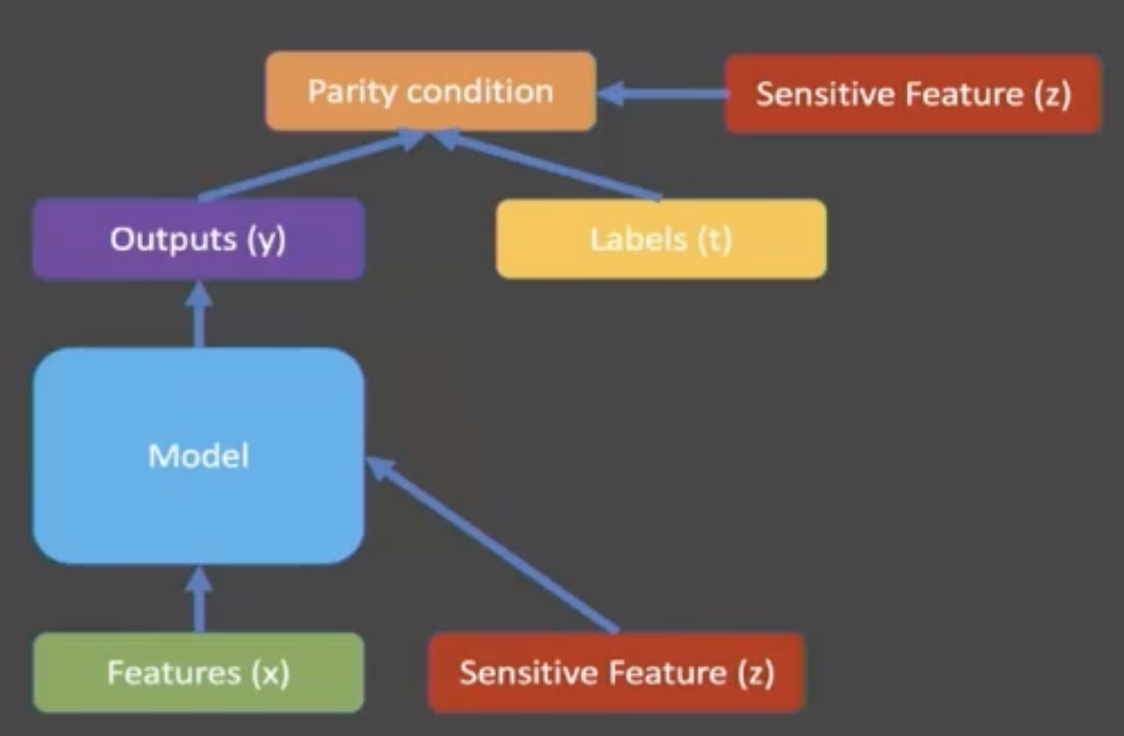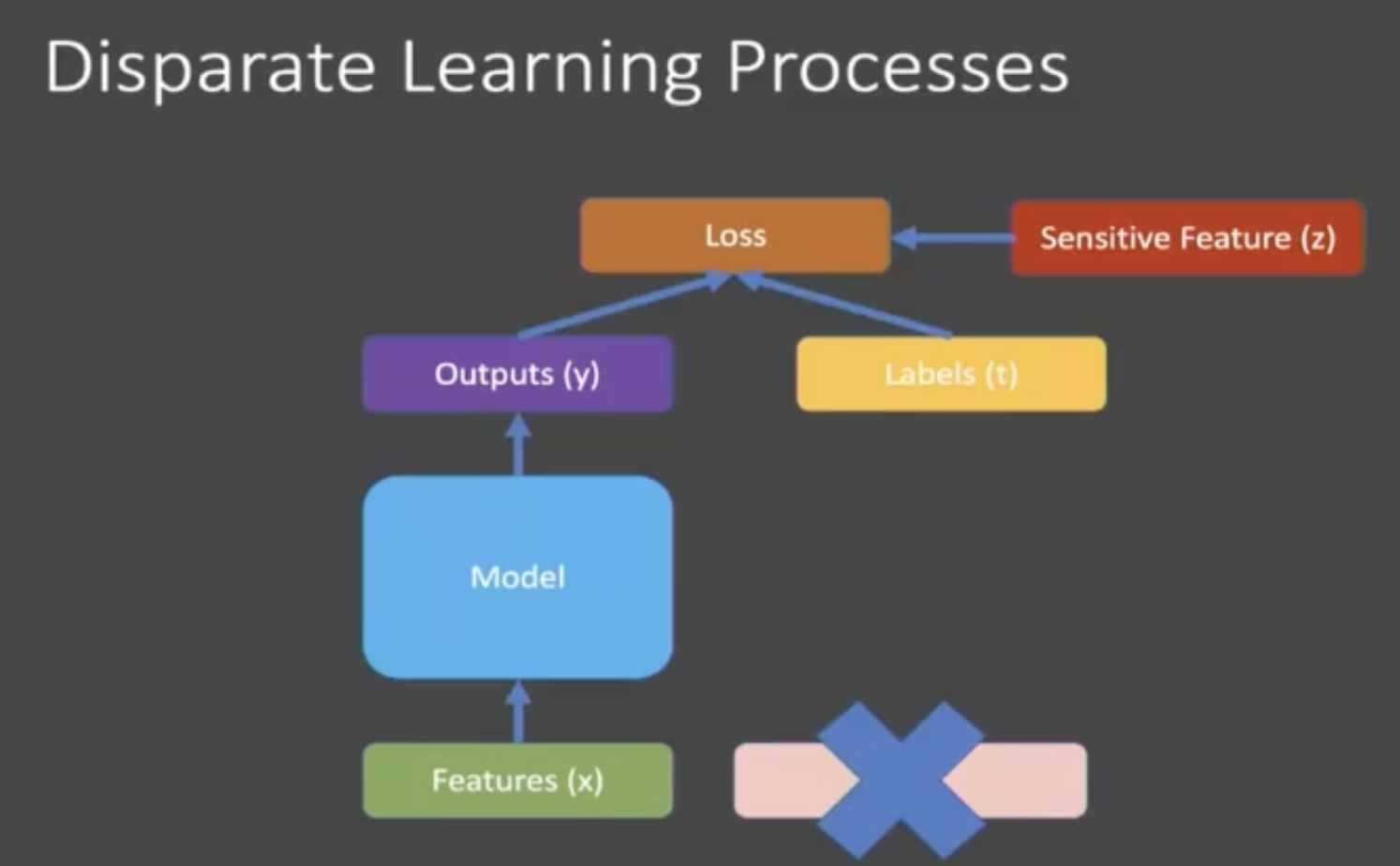Algorithmic Fairness
Algorithmic Fairness from a Non-ideal Perspective
- author/speaker: Zack Lipton
- https://arxiv.org/abs/2001.09773
-
important moments:
- ProPublica machine bias article from 2016 - a galvanizing event prompting interest: https://www.propublica.org/article/machine-bias-risk-assessments-in-criminal-sentencing
- Gender Shades- 2018. unbalanced dataset of facial benchmarks
- biased allocation of healthcare - https://www.theverge.com/2019/10/24/20929337/care-algorithm-study-race-bias-health
-
Philosophy of justice
- https://plato.stanford.edu/entries/justice/
- obligation ("one's due") in contrast to charity
- resolve conflicts when interests clash
- impartiality - two cases relvantly alike should be treated similarly
- convservative (conserving existing norms) vs ideal (demand reform of norms and practicies)
- corrective (bilateral, wrong-doer <> wronged ) vs distributive (allocating goods to individuals, mutltilateral with a distributing agent)
- procedural (procedure) vs substantive (end result)
- comparative (a position was offered to a less qualified candidate) vs non-comparative (regardless of comparison, e.g. basic human rights)
- ML disccussion often focus on comparative. should also consider non-comparative
- scope of justice
- ideal and non-ideal theorizing (The Imperative of Integration - Elizabeth S. Anderson)
- ideal:
- imagine perfectly just world (Rawls)
- try to minimzie discrepancy between reality and ideal
- e.g. been used to argue against affirmative acction - ideal world is color blind
- non-ideal:
- understand causual explanation of the problem, determine waht can be done and who to correct it.
- ideal:
- https://plato.stanford.edu/entries/justice/
-
economics
- "the economics of discrimination" - Becker
- simulation of employer taste-based discrimination
- Arrow's Rebuttal to Becker 1973
- imperfect information as alternative cause
- "Statistical theory of racism and sexism"
https://arxiv.org/abs/1905.11361- Efficient candidate screening under multiple tests and implications for fairness- concerns noise - by adjusting number of interviews. hitting boundary on left, can equalize FP and FN across groups w different noise level - but more num of interviews can negatively affect candidates too - Will Affirmative-Action Policies Eliminate Negative Stereotypes? - Stephen Coate and Glenn C. Loury - https://www.brown.edu/Departments/Economics/Faculty/Glenn_Loury/louryhomepage/papers/Coate%20and%20Loury%20(AER%201993).pdf - even when groups are equal ex ante, equilibrium outcomes following some internventions can appear to confirm negative sterotypes
- "the economics of discrimination" - Becker
-
ML fairness
-
- "ML is stuck on ... learning associations "
- it learns associations and not causal relations
- on one hand, curve fitting turned out useful many places
- but in many problems, curve fitting is not enough
-
http://approximatelycorrect.com/2016/11/07/the-foundations-of-algorithmic-bias/
-
taking inspiration from law:
- title 7 of civil rights law
- disparate treatment
- addresses intentional discrimination
- protected characterstic
- also via proxy variables
- with exceptions e.g. if goal is to promote diversity
- what does intention mean in ML context?
- addresses intentional discrimination
- disparate treament
- 3 tests:
- plaintiff must demo statistical disparity (4/5 rule)
- defendent must show descirions are justified by business necessity
- plaintiff must show defendent can achieve goal w alternative practice
- first one can be done using stats.
- later 2 of the 3 tests of the above are not well adressed by ML, require causal reasoning
- 3 tests:
- disparate treatment
- title 7 of civil rights law
-
-
typical
- treatment parity
- output does not depend on sensitive characteristic
- Model cannot use that feature
- output does not depend on sensitive characteristic
- impact parity
- outcome independent of group status
- model can use the feature, but result algo outcome is indenpdent

- model can use the feature, but result algo outcome is indenpdent
- outcome independent of group status
- representational parity
- the input map to some representation that you can't infer their demographics
- entails impact parity
- equalized odds / opportunity parity
- equal FN and/or FP rates
- treatment parity
-
problem
- the different parities are mutually irreconcilable
- statisctical parity may not capture legal/philosophical notions
- lack ingredients to determine just action
- how did disparities arive
- impact of the decision
- responsibilities of the decision maker
-
"impossibility" theorem:
- if we start from a non-ideal world, no set of action can simultaneously satisfy all the ideal
- meeting the ideal in some respect may require widening other gaps
- "equity" - peyton young, 1994
=> must make some choices- different definition of equity which all seem reasonable by itself, when together causes non-reconcible conflict
-
problem applications of attempts for fair algorithm
-

-
for maximizing impact disparity, treatment disparity is optimal (theortical)
-
if other features sufficiently can encode the sensitive feature, result is indistinguishable from teatment disparity (theortical)
-
if other features partially encode sensitive feature => empirical side effects
- recorders within group that makes no (not procedurally justifiable)
- produces potentially bizarre incentives to conform to steortype
-
example case study of gender study in CS admissions
- when applied DLP, the decisions were flipped neg to pos, for candidates that based on other traits were more likely to be female and vice versa
- in effect hurt female candidates who were applying to fields that are more male dominated
- when applied DLP, the decisions were flipped neg to pos, for candidates that based on other traits were more likely to be female and vice versa
-
-
-
interesting research to follow
- causal approaches to fairness
- counterfactual fairness (Kusner 2017)
- causal explanation (bareinboim 2017)
- sensitive to subjectivity (different interpretations of the cause)
- outsource the key issue to humans
- feedback loops - next-step or equilibrium outcomes in a dynamic model
- Delayed impact of fair ML, Liu et al
- Social Cost of strategic classification / Disparate effects of Strategic manipulation
- Runaway Feedback Loops in predictive Policing
- causal approaches to fairness